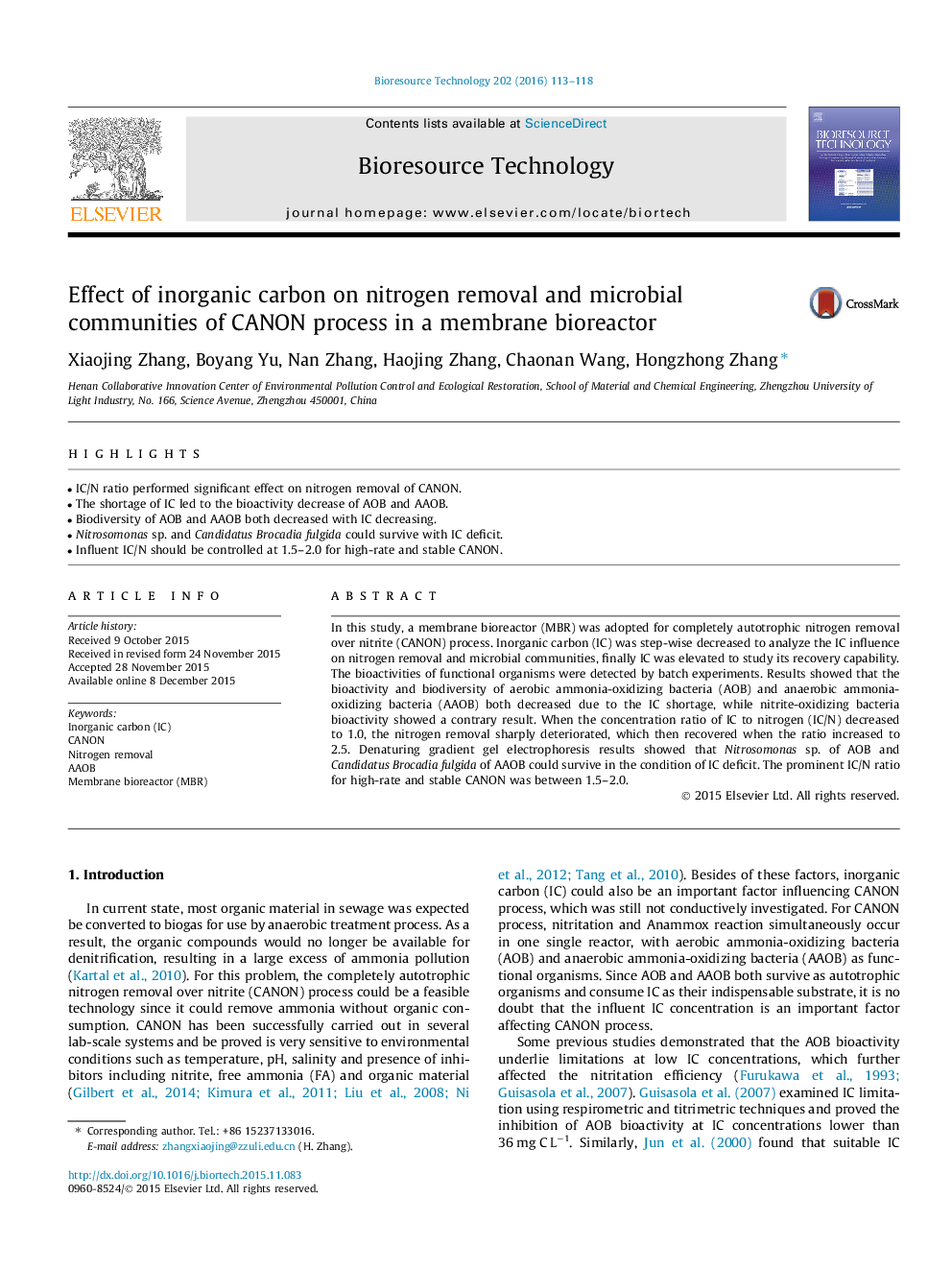| Article ID | Journal | Published Year | Pages | File Type |
|---|---|---|---|---|
| 679300 | Bioresource Technology | 2016 | 6 Pages |
•IC/N ratio performed significant effect on nitrogen removal of CANON.•The shortage of IC led to the bioactivity decrease of AOB and AAOB.•Biodiversity of AOB and AAOB both decreased with IC decreasing.•Nitrosomonas sp. and Candidatus Brocadia fulgida could survive with IC deficit.•Influent IC/N should be controlled at 1.5–2.0 for high-rate and stable CANON.
In this study, a membrane bioreactor (MBR) was adopted for completely autotrophic nitrogen removal over nitrite (CANON) process. Inorganic carbon (IC) was step-wise decreased to analyze the IC influence on nitrogen removal and microbial communities, finally IC was elevated to study its recovery capability. The bioactivities of functional organisms were detected by batch experiments. Results showed that the bioactivity and biodiversity of aerobic ammonia-oxidizing bacteria (AOB) and anaerobic ammonia-oxidizing bacteria (AAOB) both decreased due to the IC shortage, while nitrite-oxidizing bacteria bioactivity showed a contrary result. When the concentration ratio of IC to nitrogen (IC/N) decreased to 1.0, the nitrogen removal sharply deteriorated, which then recovered when the ratio increased to 2.5. Denaturing gradient gel electrophoresis results showed that Nitrosomonas sp. of AOB and Candidatus Brocadia fulgida of AAOB could survive in the condition of IC deficit. The prominent IC/N ratio for high-rate and stable CANON was between 1.5–2.0.
